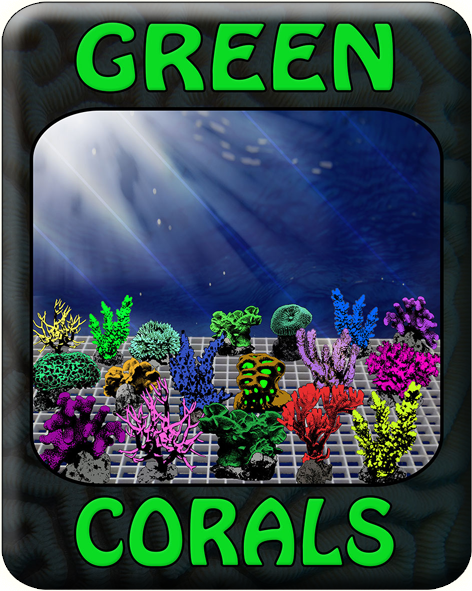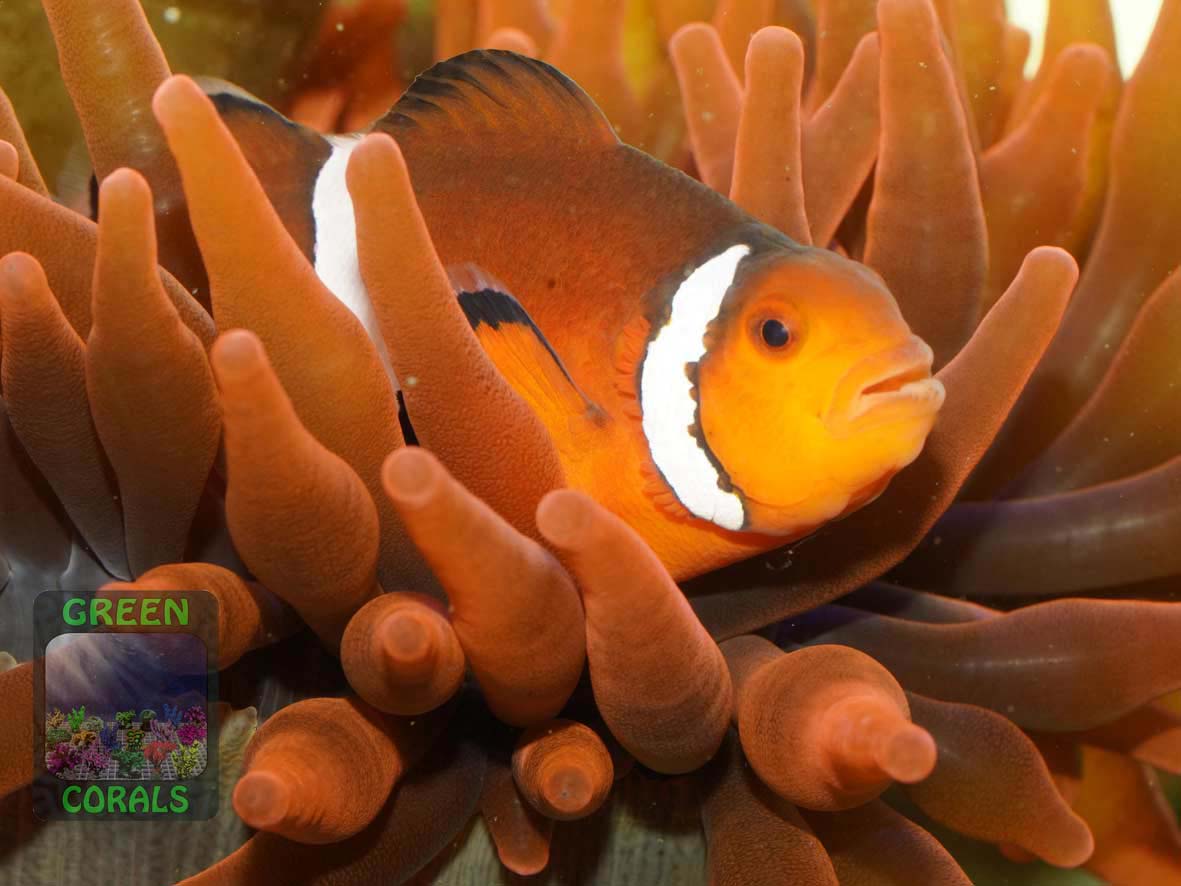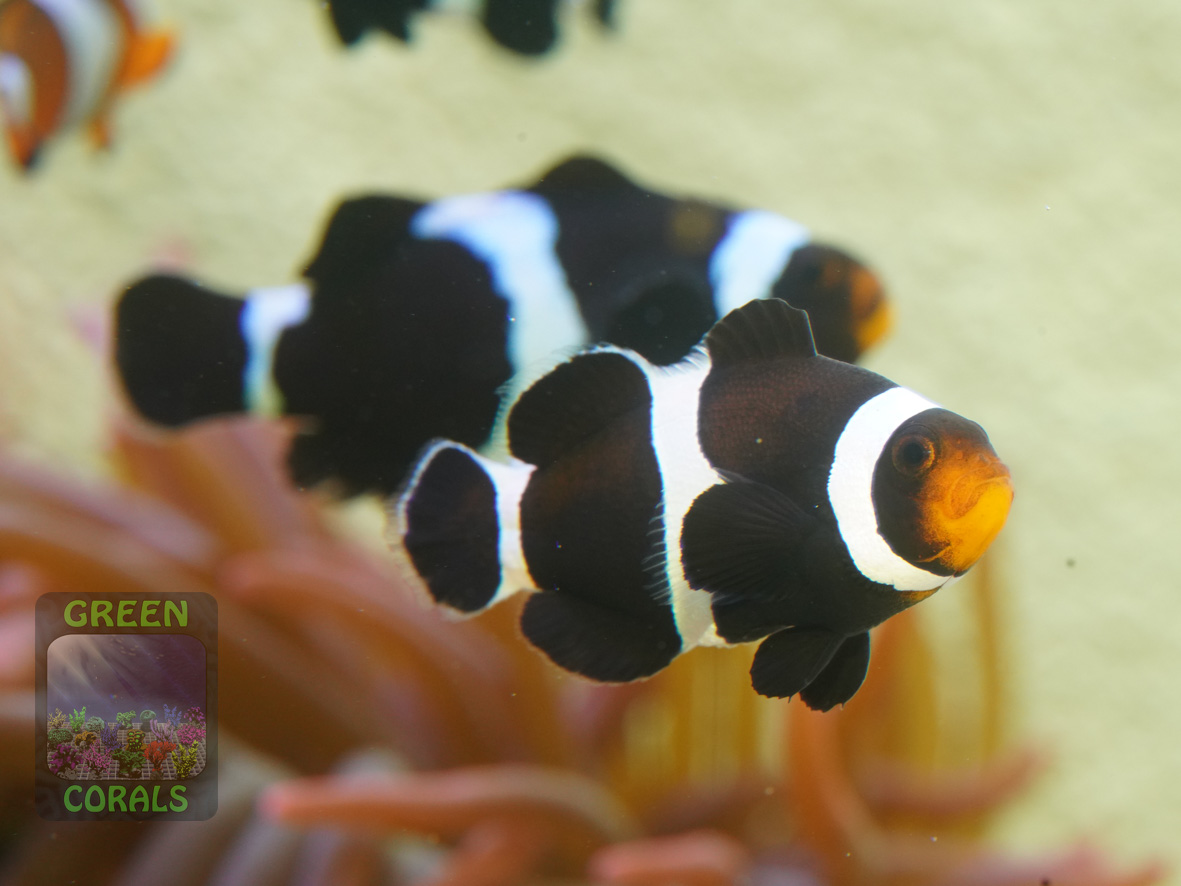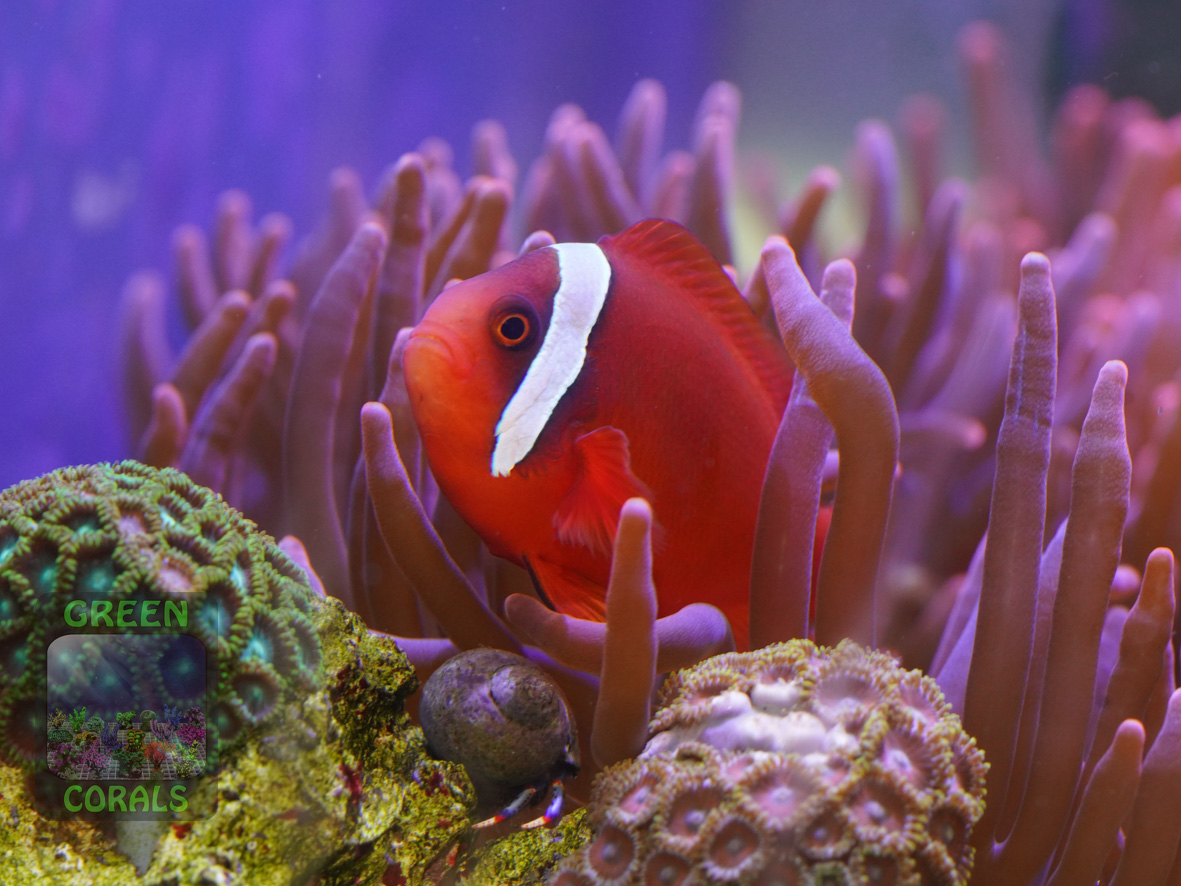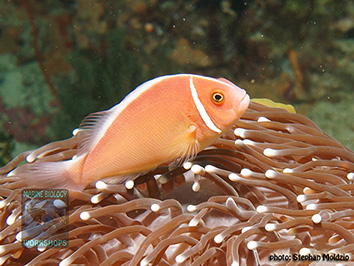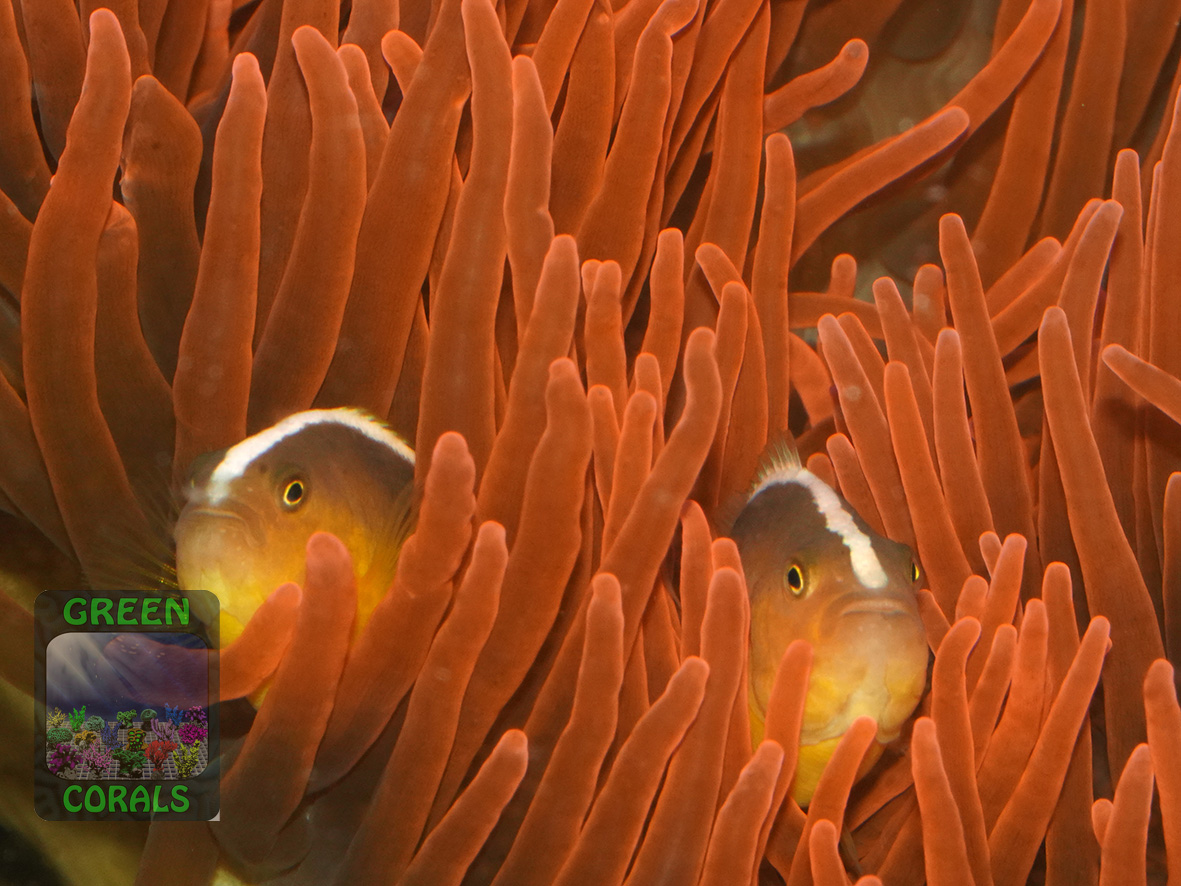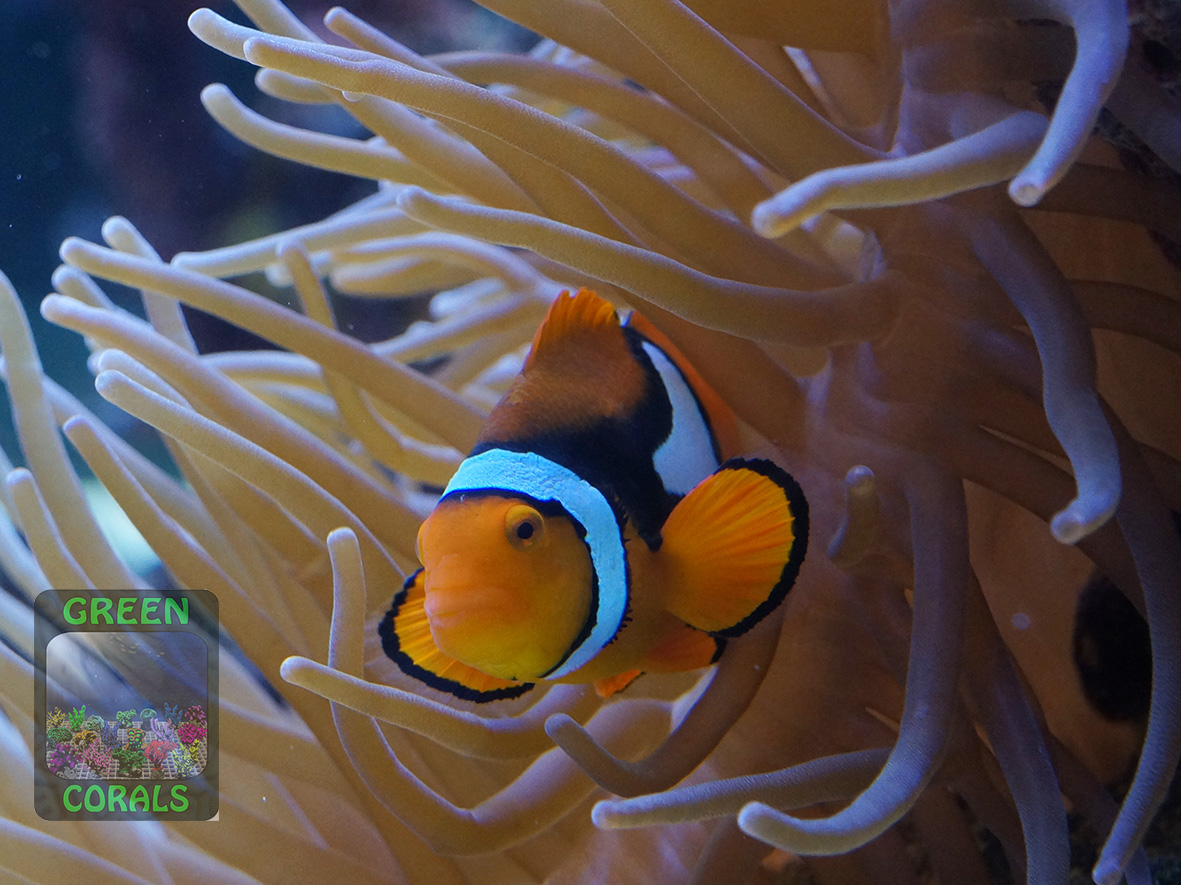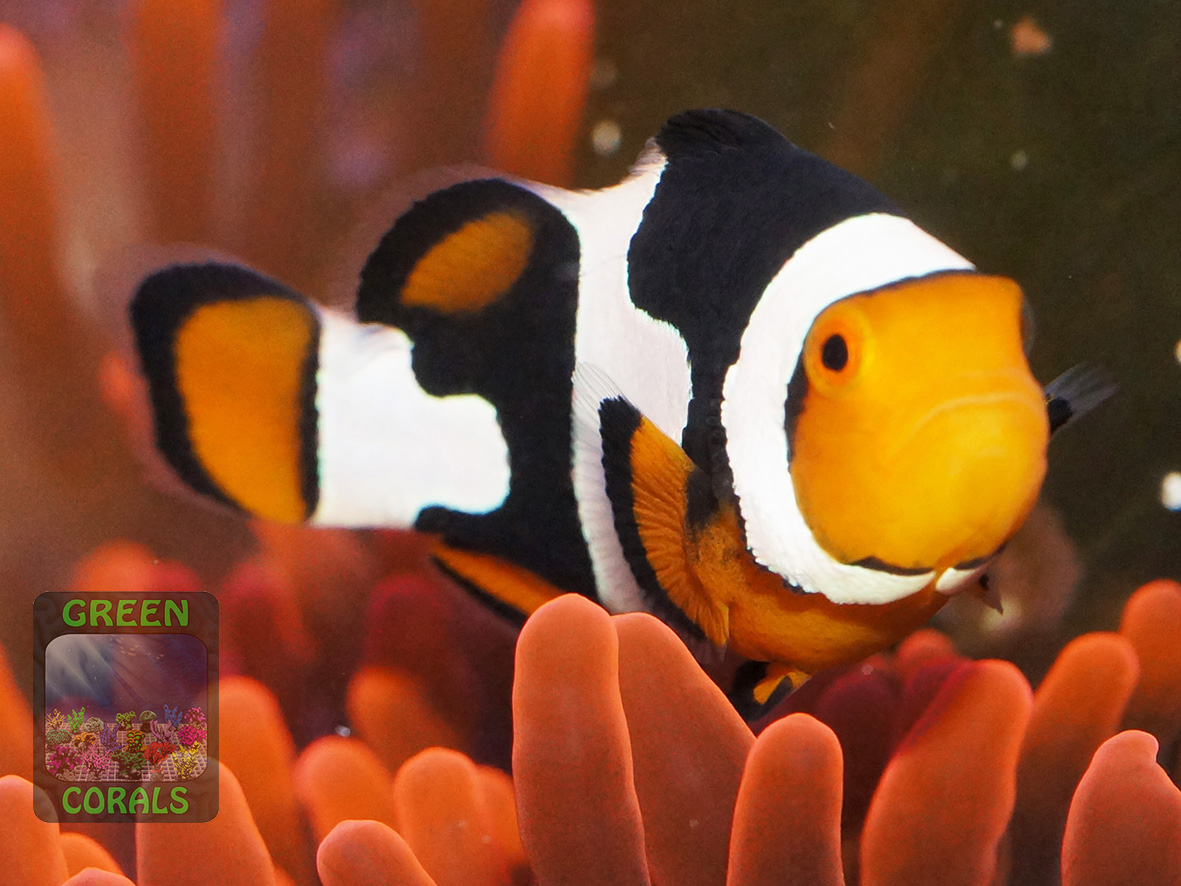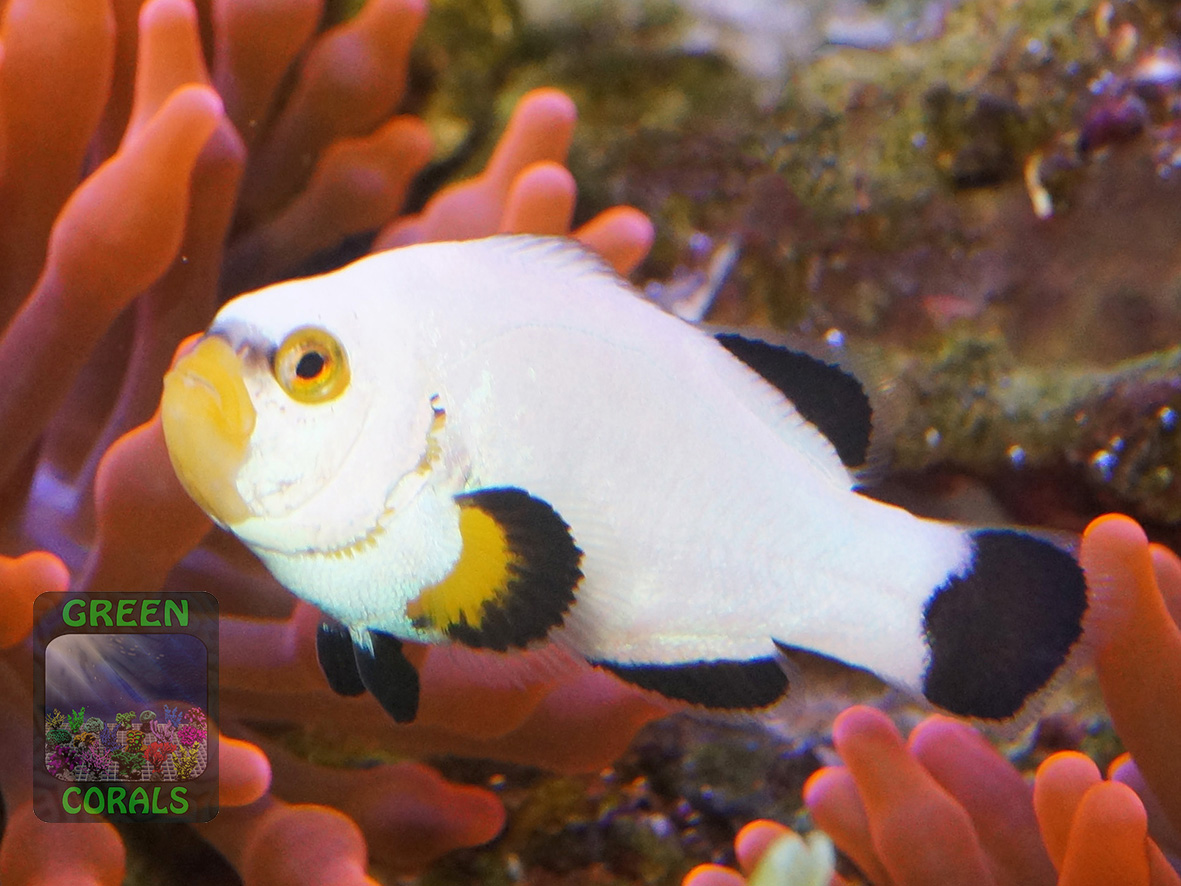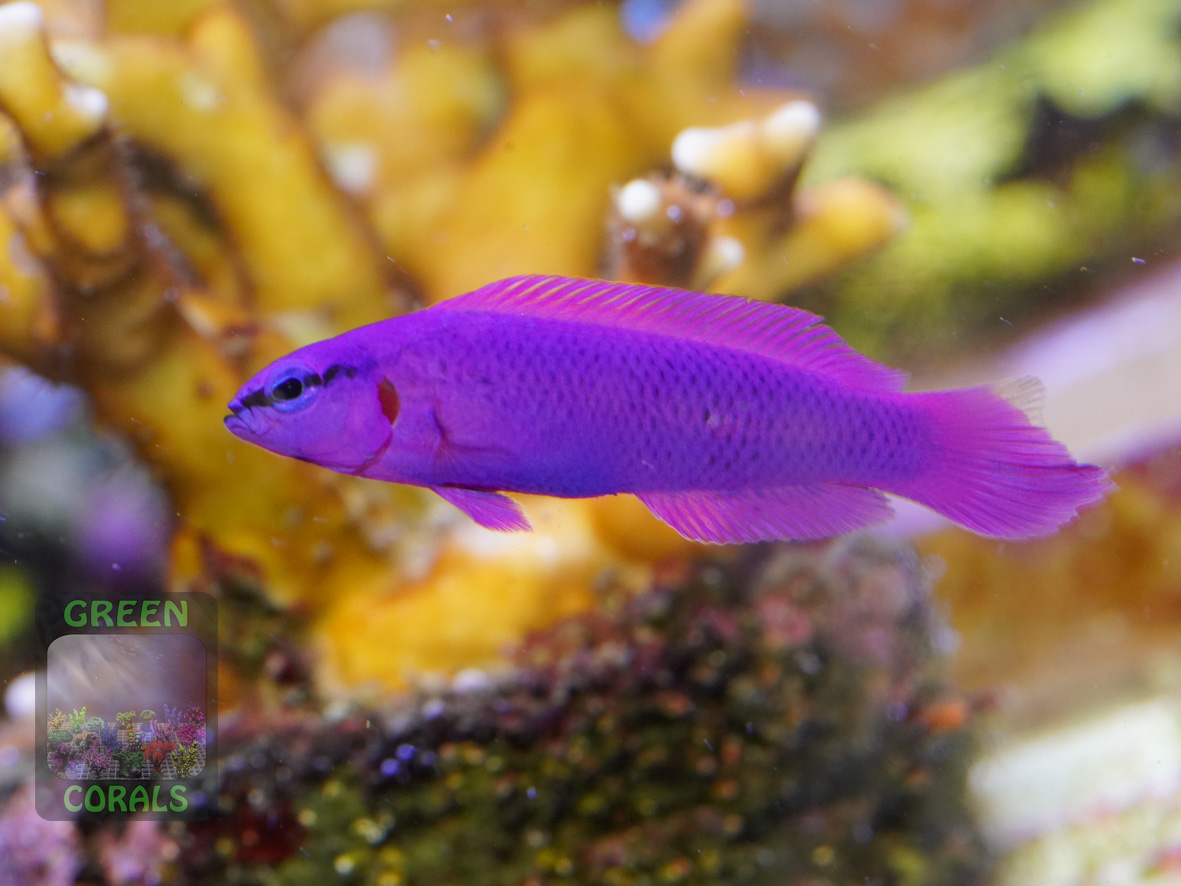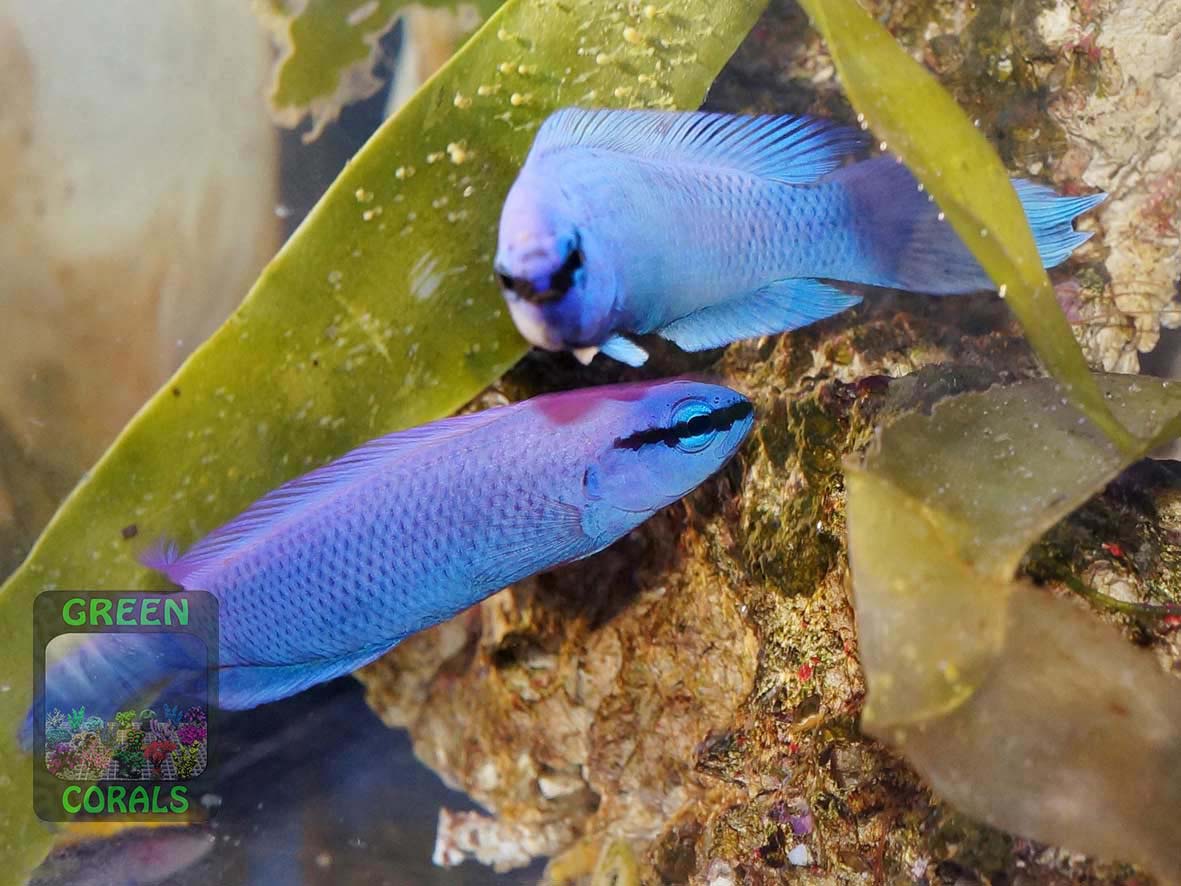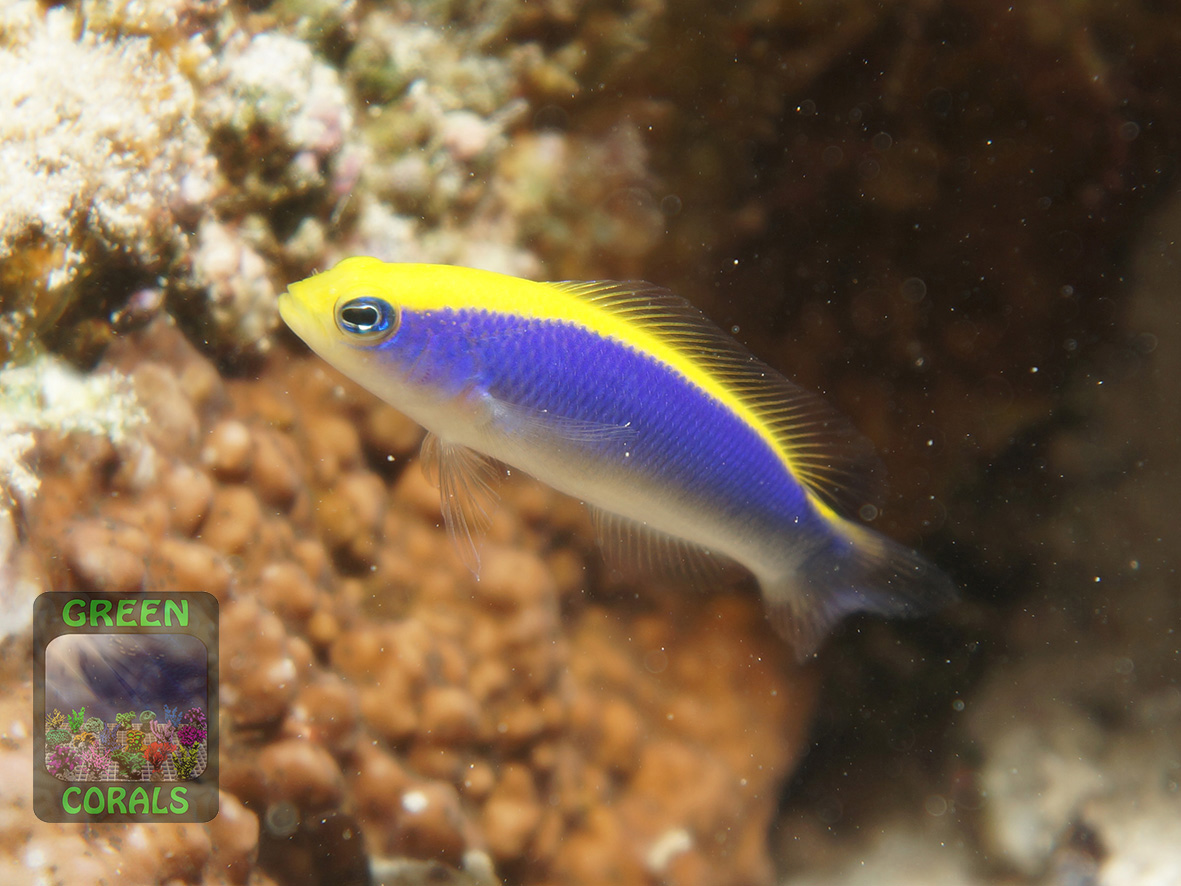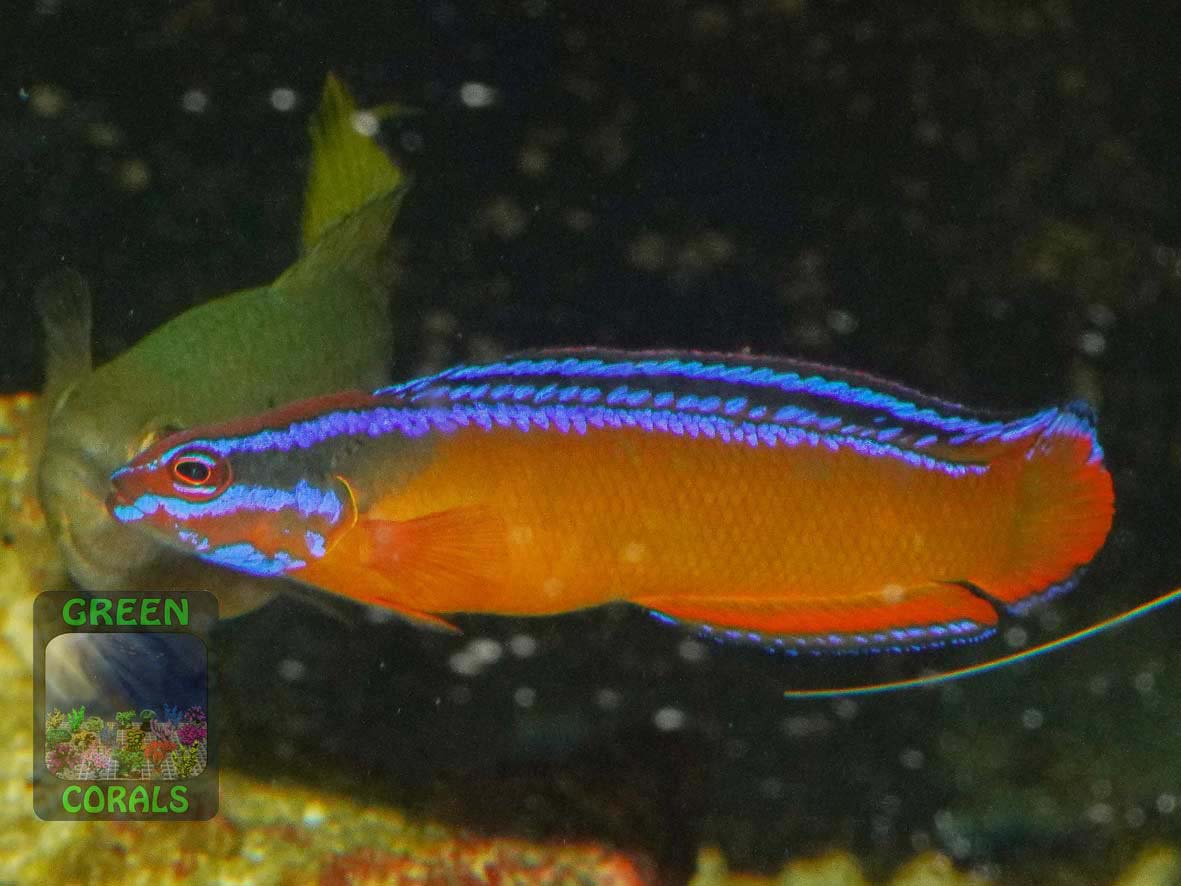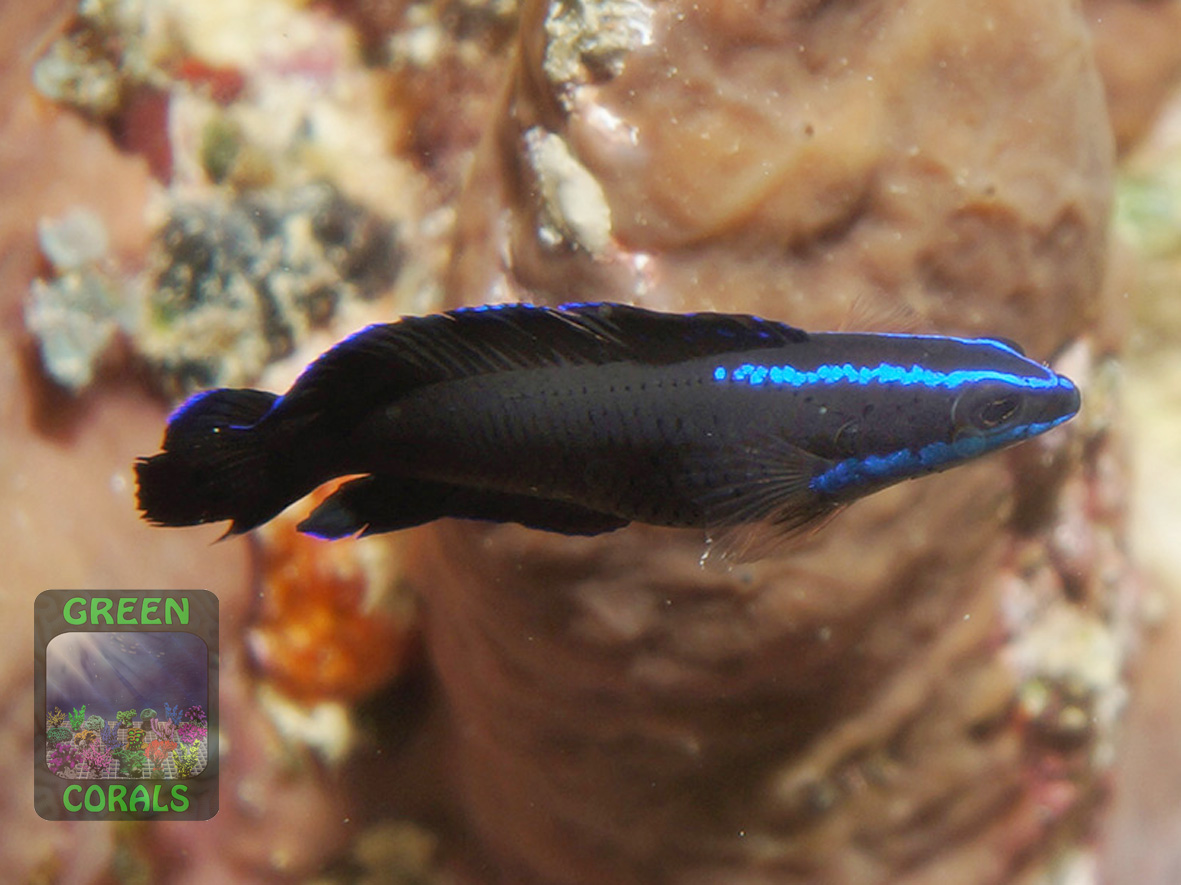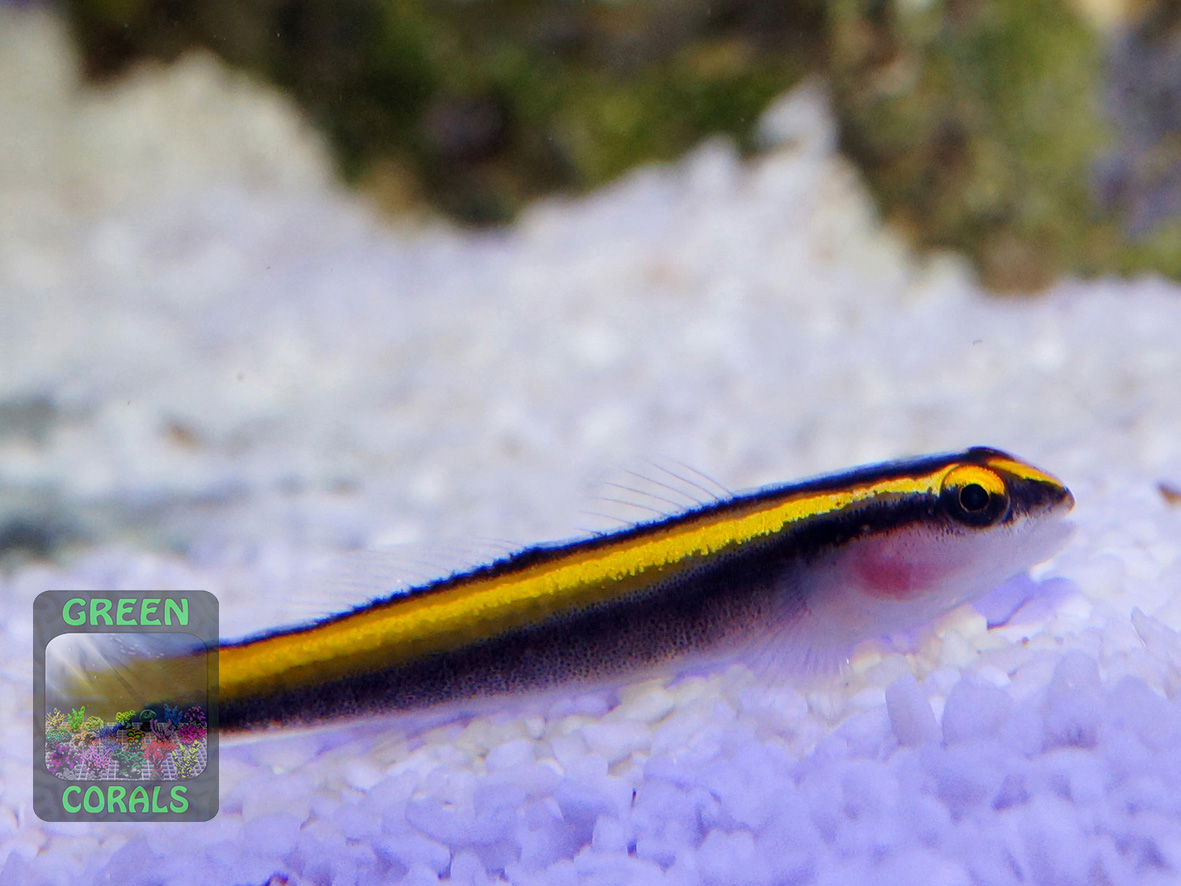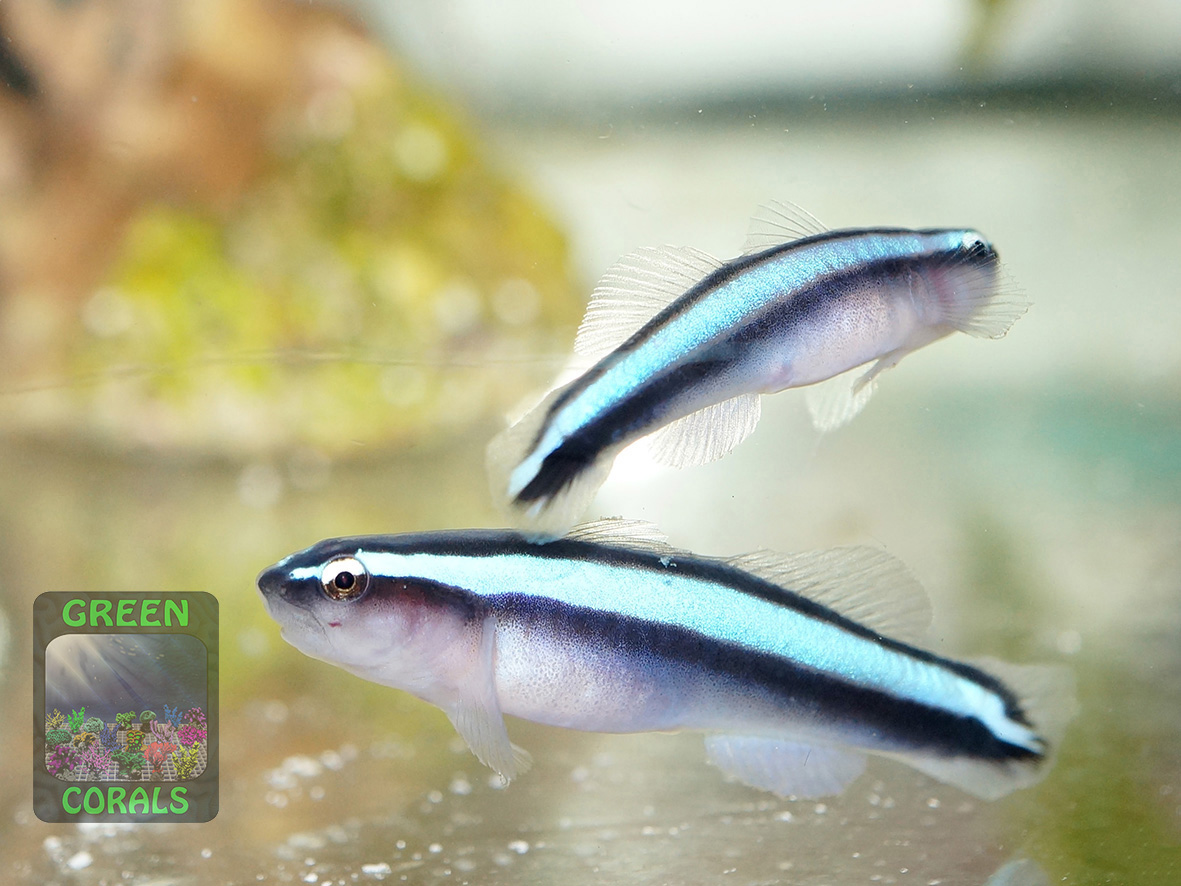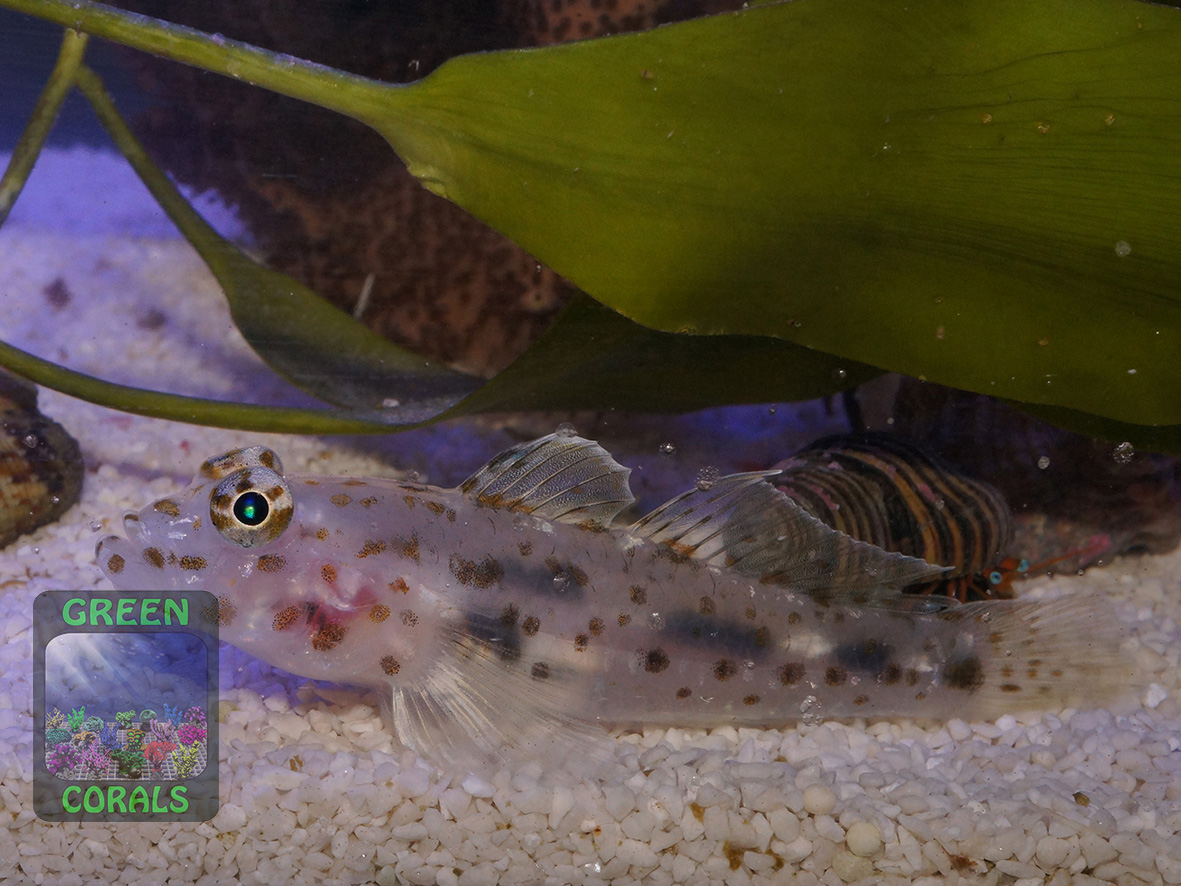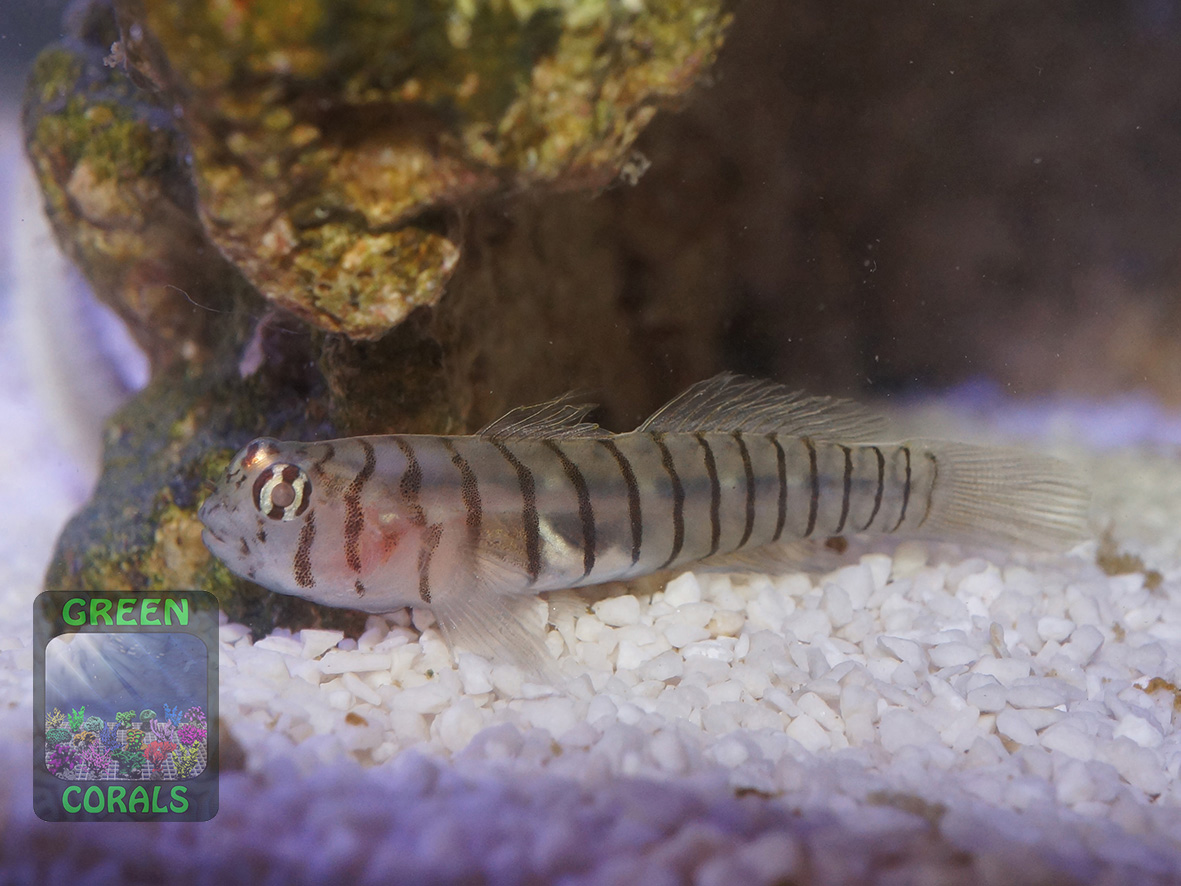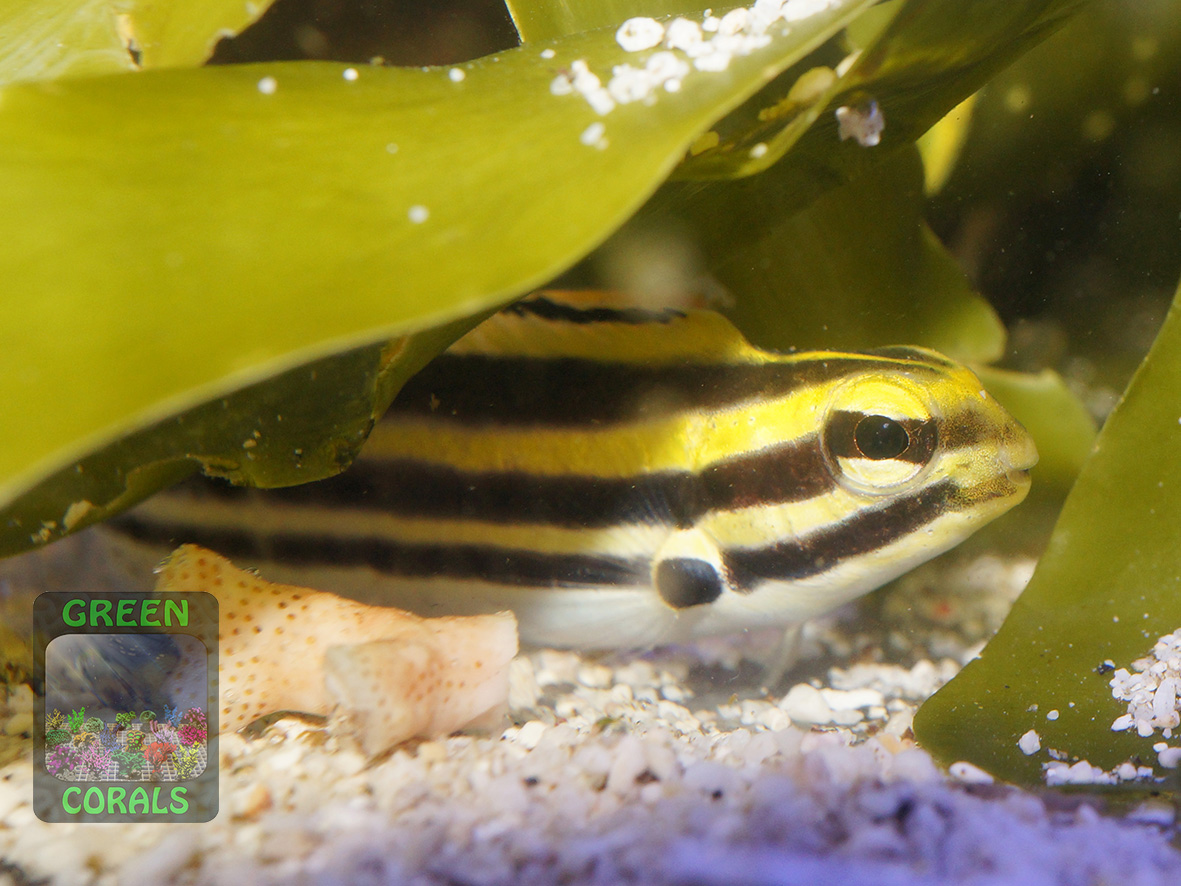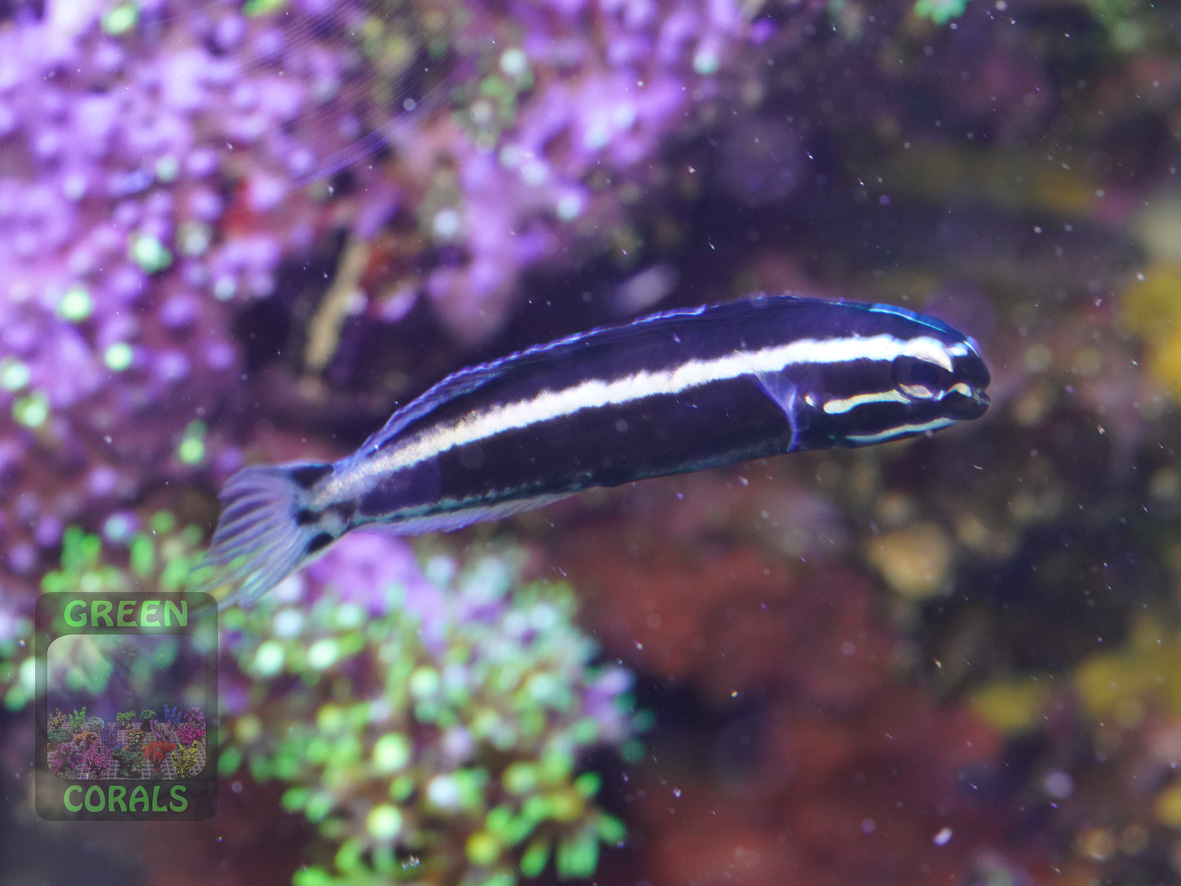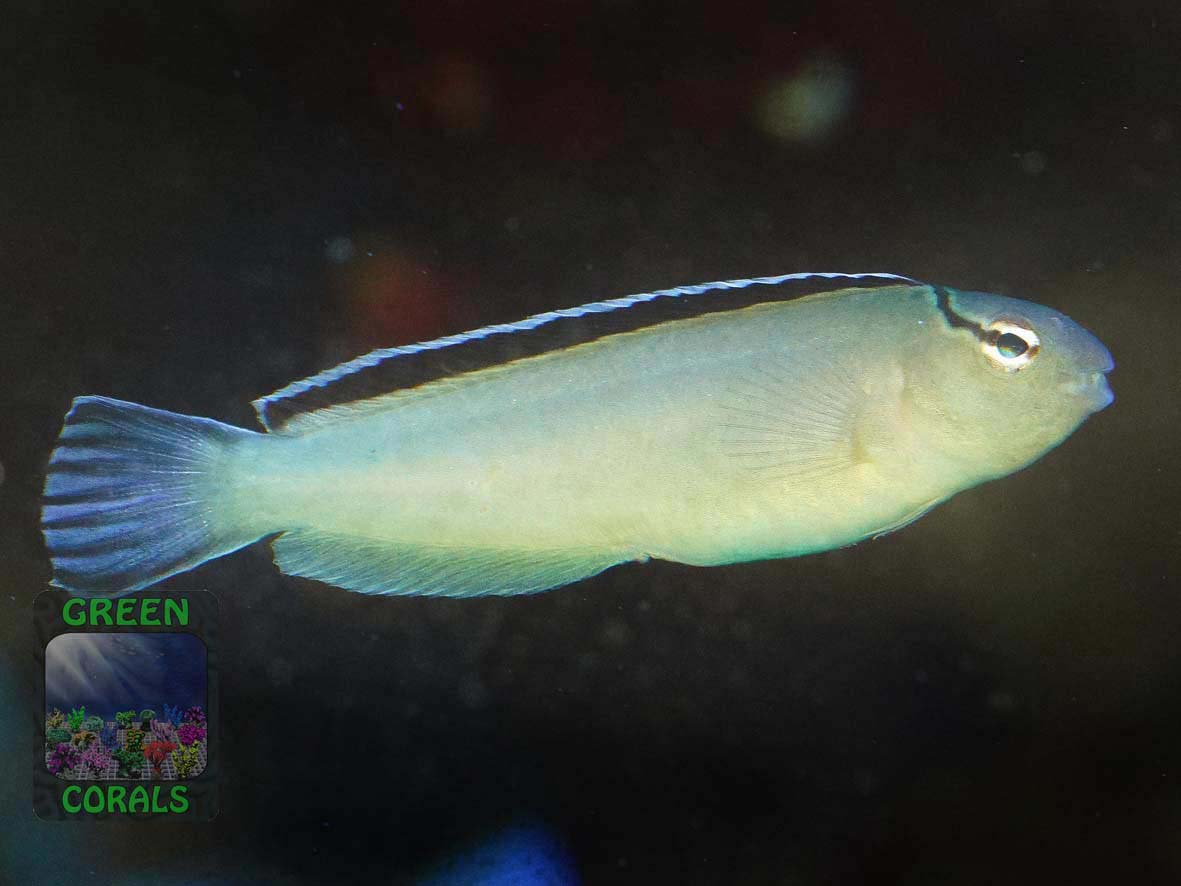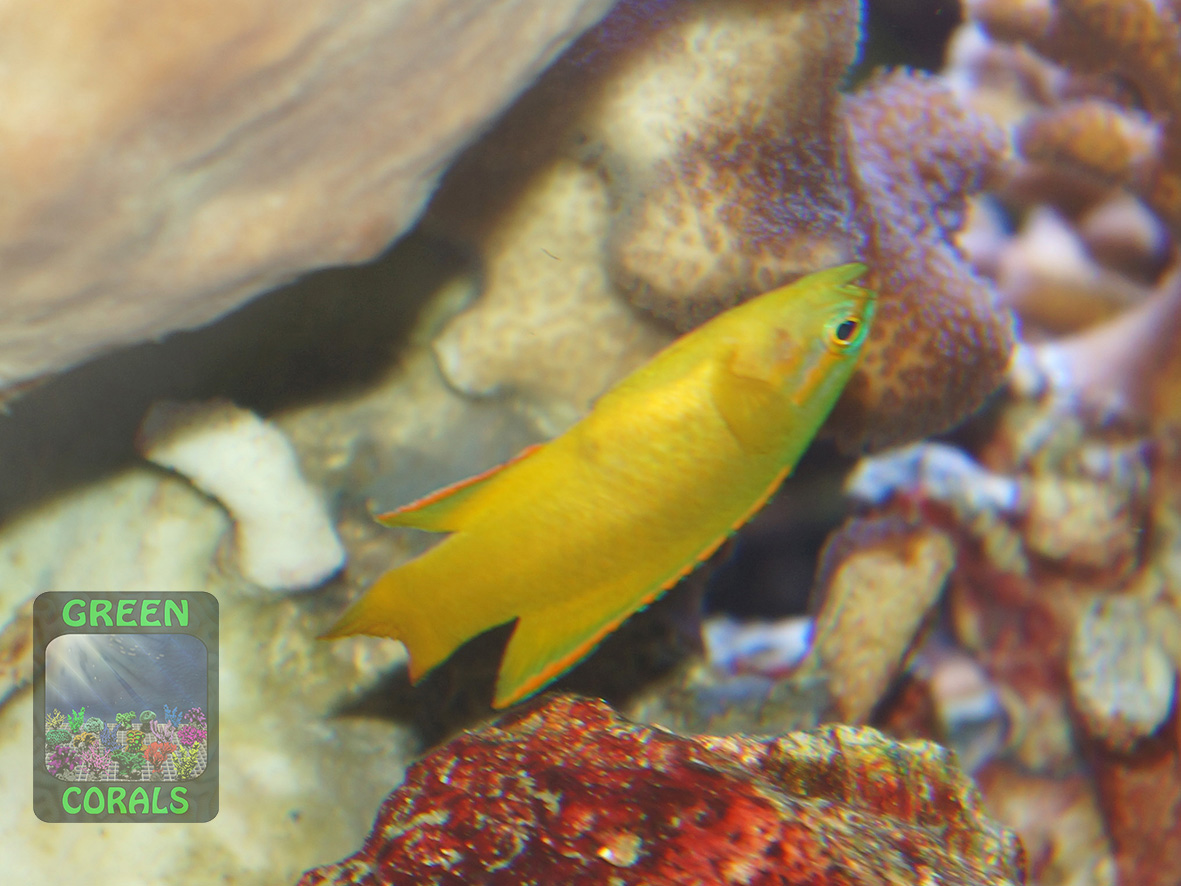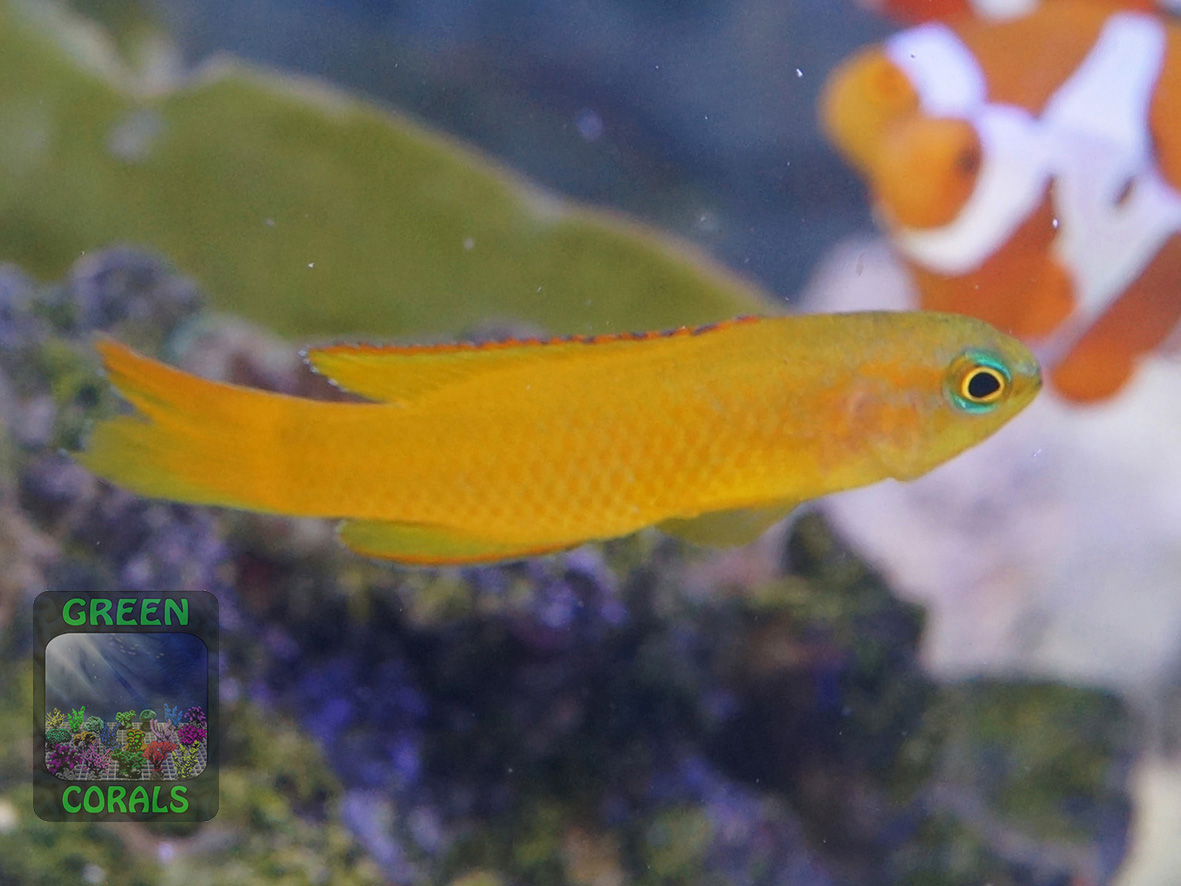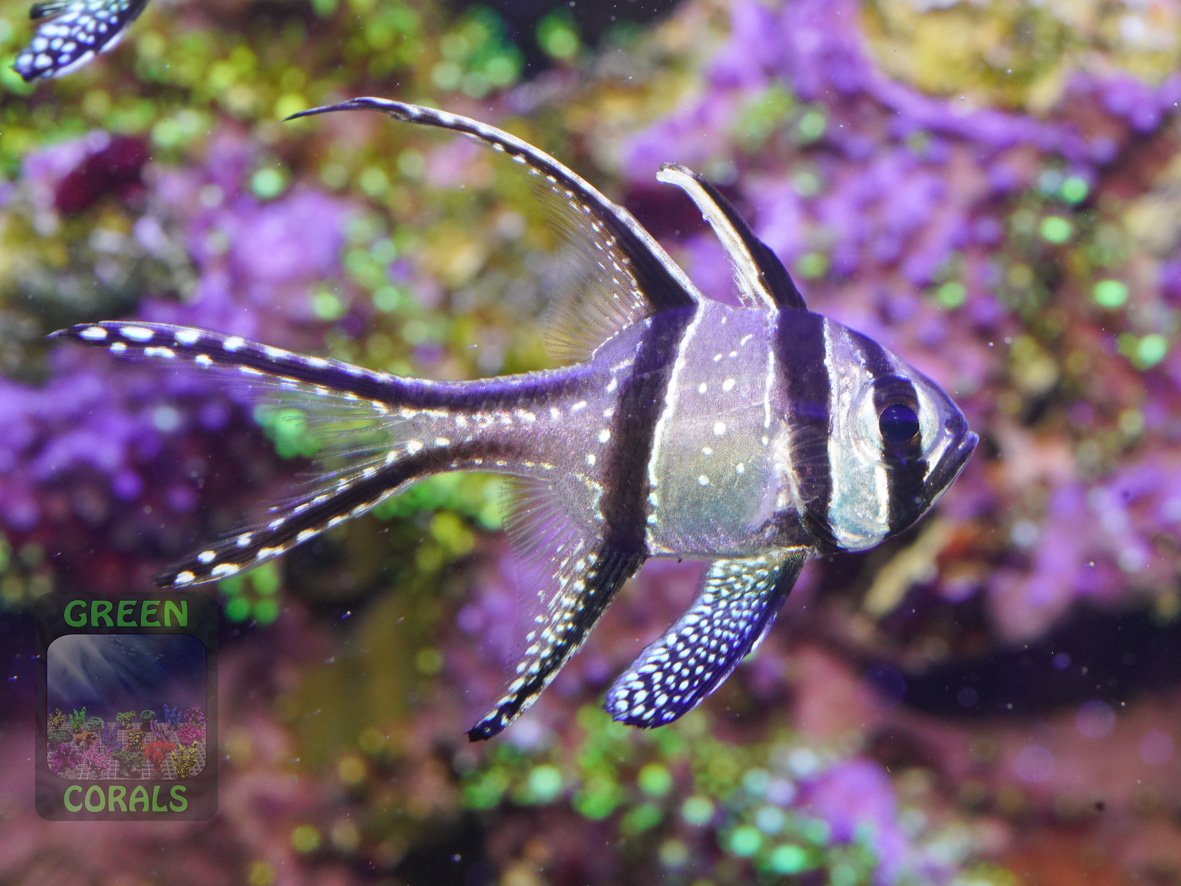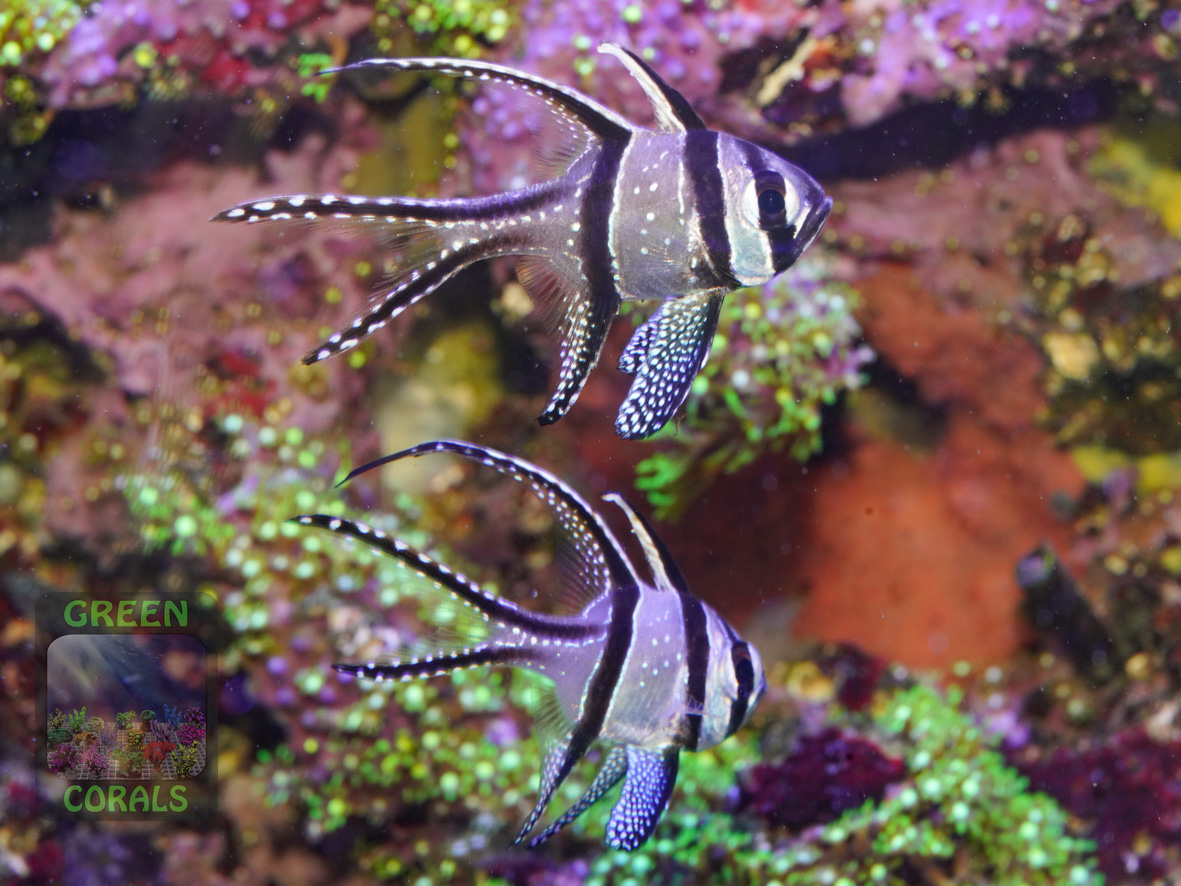CORAL FISH FROM LOCAL PRODUCTION!
In cooperation with a dedicated breeder from Braunschweig, Germany, we also offer offspring of various anemone fish, cardinal fish, roundheads and dottybacks, as well as gobies.
We also source other fish from commercial breeders such as BIOTA or ORA. through our trusted wholesalers.
Read Tom Bowling`s interview after our visit to the BIOTA-Marine Life Nursery in Palau.
Captive breeding is preferable to imports in a number of ways:
- Natural resources are conserved
- avoid high mortality rates from capture to export to the home aquarium
- Offspring are better adapted to aquarium conditions
- The efforts of dedicated aquarists to make further progress in the breeding of marine animals and for a more sustainable marine aquarium hobby should be supported!
Anemone fishes (Amphiprion spp.)
Anemonefish are probably the most popular saltwater fish and a real favourite when they snuggle up in the tentacle forest of their anemone. It’s a good thing that the two very similar species, Amphiprion ocellaris and Amphiprion percula, are among the easiest saltwater fish to breed, accepting freshly hatched Artemia nauplii and powdered food as their first food.
We recommend keeping anemonefish in pairs. An anemone (e.g. Entacmaea quadricolor bubble anemone) is also a prerequisite for species-appropriate care.
You can find our anemone fish in our shop
Amphiprion ocellaris and Amphiprion ocellaris `black´
Amphiprion frenatus, A. perideraion, A. sandaracinos
Amphiprion percula, A. percula`Picasso´, A. percula`platinum´
Dottybacks (Pseudochromis spp.)
Dottybacks are ideal aquarium fish: they can be bred, are small, pretty, have interesting behaviour, are robust and can be kept in small tanks.
Dottybacks will eat almost any food and can be easily kept in a community tank as a pair (P. flavivertex) or in a harem (P. fridmani, P. aldabraensis). P. fridmani is endemic to the Red Sea and usually lives in groups on steep and somewhat shady reef walls. It is the most peaceful of the dwarf perch species. We particularly recommend keeping them in a harem of one male and several females (tank size around 500 litres). If several juveniles are introduced, the dominant male will develop into a buck and the others will remain females.
Pseudochromis aldabraensis and P. flavivertex are both “typical dottybacks”: small, easy to keep, pretty & interesting behaviour.
In the wild (Indian Ocean) they live in pairs and are clearly territorial, e.g. in a medium-sized coral reef on a sandy bottom close to the reef. They therefore need a well structured tank where they can mark out “their” den and territory.
The relatively common reports of “aggressiveness” in both species relate to wild-caught specimens – captive-bred animals, growing up with several hundred siblings, are absolutely peaceful! In general, ‘aggressiveness’ in aquarium fish is usually related to a lack of food or overstocked tanks with too few hiding places.
Dwarf perch can change sex, it is best to keep 2 small ones, then there is a good chance that a pair will develop, which – if well fed – will only be preoccupied with themselves…
You can find our Dottybacks in our shop .
Pseudochromis fridmani, P. sankeyi x fridmani
Pseudochromis flavivertex, P. aldabraensis, P. springeri
Gobies (Elacatinus spp., Tigrigobius macrodon, Fusigobius pallidus)
The goby family has a large number of species that are perfectly suited to the marine aquarium:
Small and peaceful, easy to breed, attractive and with very interesting behaviour.
You can find various goby offspring in our Shop
Elacatinus figaro, E. oceanops
Tigrigobius macrodon, Fusigobius pallidus
Fangblennies (Meiacanthus grammistes, M. kamoharai, M. smithi)
The attractive fang blennies of the genus Meiacanthus are very active open water swimmers – unlike most other blennies, which have no swim bladder and tend to sit on the bottom. They do not feed on algae but on zooplankton. In the aquarium they will eat a variety of frozen foods, as well as flakes and pellets.
They grow to around 6-11cm in length, require plenty of swimming space and should be kept either individually or ideally in pairs. It should be noted that they do NOT change sex, males (longer fins) and females (thicker belly) are determined from the moment they hatch. Animals of the same sex will fight each other!
Also worth mentioning are the poisonous teeth that give the genus of fangblennies its name. But don’t worry – they are completely harmless to other inhabitants of the tank and to humans. Their teeth are only used for defence against predators (or if you try to catch them by hand…).
Their range is the tropical western Pacific, from Western Australia in the south, through Papua New Guinea and the Philippines, to Japan and Micronesia in the north and east.
Several fangblennies in our shop as juveniles!
Meiacanthus grammistes, M. kamoharai, M. smithi
Yellow devilfish (Assessor flavissimus)
Assessor flavissimus
The Yellow devilfish Assessor flavissumus is a very pretty and graceful cave dweller, often found in groups ‘upside down’, with their bellies facing upwards, under shady ledges or in caves. It is found throughout the tropical West Pacific, from the Great Barrier Reef to Papua New Guinea and Fiji.
It grows to about 6cm long, is very peaceful and should be kept in pairs. In larger tanks also in groups. In the reef aquarium it should be provided with a richly structured rock structure with many caves, shelters and hiding places. It will feed on a variety of frozen foods that fit in its mouth, such as Artemia, Daphnia or Mysis. However, it is a slow eater, so you need to make sure it gets enough from other lively fish.
The Yellow devilfish is a real gem – we have captive bred fish from Braunschweig in our shop !
Banggai-Cardinalfish (Pterapogon kauderni)
Banggai Cardinalfish Pterapogon kauderni was originally endemic to the Banggai Islands, east of Sulawesi, Indonesia. Recently, a population has been found in the Lembeh Strait. This small range alone means that it is almost automatically threatened with extinction. Natural harvesting is therefore out of the question, but fortunately the mouthbrooding Banggai cardinalfish is relatively easy to breed!
Offspring from Braunschweig available in our Shop !
Pterapogon kauderni
